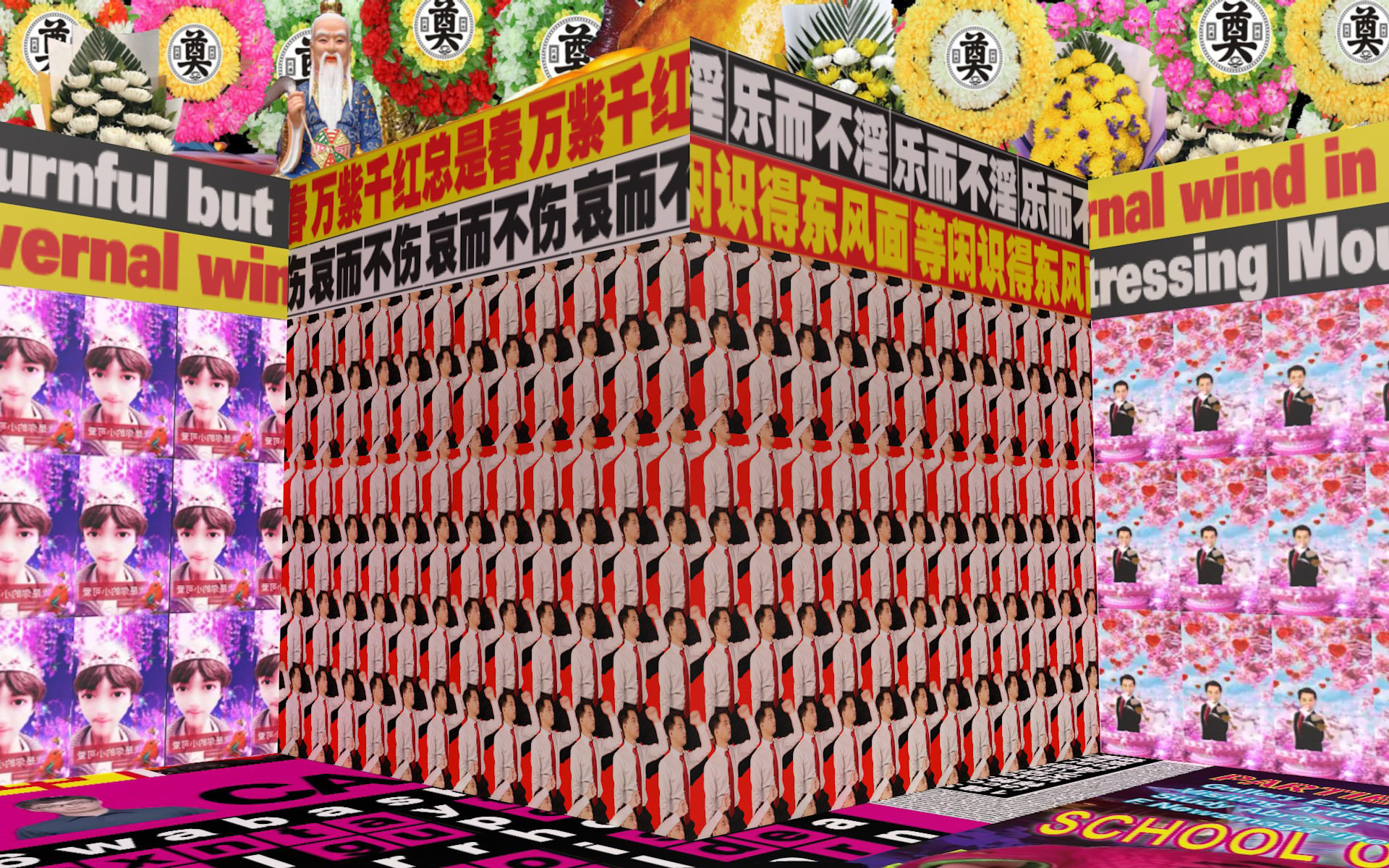You probably wouldn’t expect to find a contemporary Chinese art installation in one of north London’s residential neighborhoods, and at first glance, walking into St. Saviour’s Church in Highbury will not do much to ease that skepticism. Enter through the back door and you’re met by a temporary wooden corridor that zigzags into the main part of the decommissioned building. But make your way through the short maze and you’ll find your confidence return as the grey hall opens up into a nave, enclosed by similar custom panels, with an altar housing a glowing, white-blue box, and a figure moving slowly within it.
Until November 3, this is where you’ll find Beijing-based artist Wang Wei’s latest international installation. It’s the first of three projects facilitated by Hong Kong-Shanghai gallery Edouard Malingue at St. Saviour’s, though the building, originally constructed in 1866, has operated as an artist’s trust for over 30 years.


Wei is known for his immersive installations, and as an appropriator of existing space, co-opting the world around him to transform the way people see, think, and feel — a trifecta not unchecked with this work. Titled Listen, the frosted rectangular glass box is lit from within, where during operating hours, an actor stands and walks, supposedly eavesdropping on visitors, observing the observers. While perhaps unexciting in its concept, the site-specific project’s aim of “creating a thoughtful dialogue across geographies and mediums” is accomplished in a number of unexpected ways, a large part of that having to do with Wei’s sensitivity to physical space.
There’s a certain pregnant atmosphere one often encounters when walking into a church — it’s a place of worship, a landmark of cultural significance, and, for some, a building housing divine truth. Whether or not one holds a personal identification with the building, that atmosphere carries a different kind of weight when divorced from an impending service or religious ritual.


With the wings of the nave at St. Saviour’s closed off, the installation’s custom-fitted wooden panels act as blinders, enclosing the space and focusing the viewer’s attention on the figure ahead. They’ve slightly soundproofed the echo chamber, though the building’s high ceilings still carry the sound of footsteps, leaving viewers virtually alone with the person behind the screen, who knows they’re there but can’t see or hear them. It’s a weirdly intense, physical feeling. The slight changes Wei has made to what should be familiar experiences, or concepts, create a sense of distance that forces one to acknowledge the limitations of the confronting objects — of what’s right in front of you. It’s a concept Dr. Wenny Teo of The Courtauld Institute of Art refers to as “defamiliarization,” making something you know well, something you’ve often encountered, into something you have to think twice about.
The work alludes to tensions in the global discourse when it comes to screens and isolation, religious conquest and colonialism
And that’s where Listen succeeds in creating a thoughtful dialogue across geographies and mediums. While the work alludes to tensions in the global discourse when it comes to screens and isolation, religious conquest and colonialism, the heavy hitter in this show is the lived reminder of just how much we can’t take for granted. We may know that backgrounds and geographies lend themselves to different experiences, but the language we use to articulate that, and the media we use to do it, are so familiar, so often used, that it’s easy to synthesize that information in a way that doesn’t align with what we think we know. But feeling that puts us in a genuine position to listen, and that’s a sentiment we should all get uncomfortable with.

















